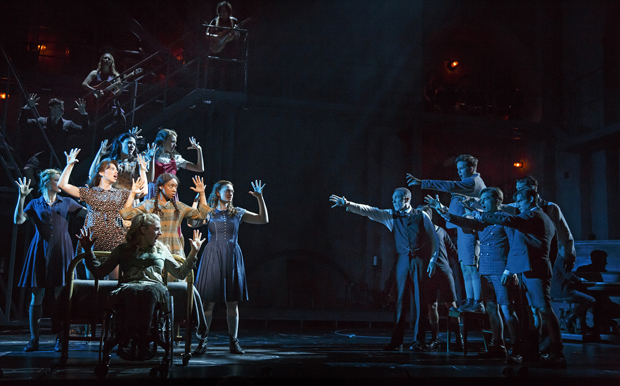New Report Detailing "Ethnic Representation on New York City Stages" Is Released

(© Joan Marcus)
The Asian American Performers Action Coalition (AAPAC) has released its annual report, Ethnic Representation on New York City Stages, detailing the ethnic distribution of actors hired on Broadway and at the 16 largest non-profit theater companies in New York City.
This year's report finds that 35 percent of all roles on New York City stages went to minority actors in the 2015-16 season, with minority actors filling 36 percent of all Broadway roles. Those numbers are a record high in the 10 seasons AAPAC has collected data for the industry. After four years in a row of exceeding the 10-season average of 23.7 percent in the industry as a whole, AAPAC suggests that "it seems safe to say that there is a definite upward trend in the casting of minority actors." Specifically, "African American actors were cast in 23 percent of all roles, Latinx actors in 7 percent, Asian American actors in 4 percent, and all other minorities (Middle Eastern/North African, American Indian and disabled actors) comprised 2 percent, while Caucasian actors filled 65 percent of all roles."
In the report's introduction, AAPAC notes that "while Broadway musicals hired 43 percent minority actors this season, plays on Broadway hired only 16 percent (14 percent of whom were African American)," and in addition, no Latinxs were represented in Broadway plays, and Asians did not fare much better with only one Asian actor who was cast in an ensemble role.
Across the industry overall, Asian American performers dropped 5 points to represent at 4 percent of all roles within the industry, while Middle Eastern/North African (MENA) performers represented at 0.83 percent of all available roles, American Indian performers represented at 0.08 percent, and disabled performers represented at 0.67 percent. AAPAC points out that while the percentage of disabled performers is small, "this is the first year of the report that numbers for disabled actors were statistically significant, due to the deaf actors hired in the Broadway revival of Spring Awakening."
"We applaud our colleagues at AAPAC for compiling this report and continuing to hold all of us in the theater community accountable as we strive to create a fairer and more inclusive industry," reads the American Theatre Wing's statement from Heather Hitchens, president & C.E.O. "From its founding day in 1917 up until the present day, the Wing has been committed to diversity and inclusion. Founded by women at a time when national suffrage was yet to be realized, the Wing boldly established an interracial policy at its Stage Door Canteen six years before the armed forces were integrated. More recently, the Wing established the Andrew Lloyd Webber Initiative to provide grants to schools and scholarships to a diverse group of students who will strengthen our professional pipeline and help make our stages be more reflective of the country we are living in. Much more needs to be done and this report from AAPAC makes that very clear."
"In the coming months," Hitchens continues, "the American Theatre Wing's Diversity Committee, led by our chairman, David Henry Hwang, will reflect on this data and work on expanding the study to include offstage vocations, gender diversity, and other similarly important topics of inclusion. By the close of 2018, we hope to announce new partnerships, programs, and strategies that will help us continue to move the needle. We urge our colleagues in the theatre to do the same. It is not only a matter of doing what is fair and just; it is absolutely critical to the vitality of our field."










